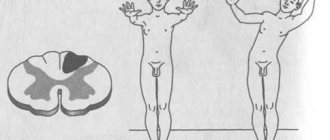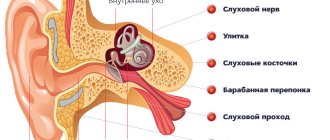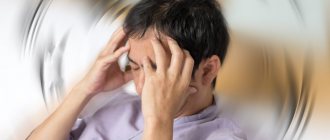Most balance problems arise from problems with the brain or inner ear, or from physical problems such as bone fractures or muscle injuries.
Balance problems can make walking difficult. They can make a person feel like everything is spinning around them.
Although many balance problems are relatively harmless, a person cannot diagnose the cause on their own.
People who have problems with balance and coordination should see a doctor if symptoms persist.
Symptoms of imbalance
Balance problems generally fall into two categories: physical injuries or neurological problems and inner ear problems.
A person with vertigo or other forms of dizziness may have trouble coordinating their movements. Their brain may not send the right signals and they may feel like the room is spinning.
In contrast, physical injuries usually cause problems with movement in certain areas of the body.
Neurological and inner ear problems
Problems with the nervous system, inner ear, or circulatory system can make it difficult to coordinate movements.
Some symptoms include feeling:
- dizziness;
- does not understand where the body is;
- worries when moving;
- the room is spinning;
- weakness or numbness on one side of the body.
Injuries
Sometimes a physical injury makes it difficult to move all or part of the body. Some symptoms include:
- muscle weakness that causes a person to fall easily;
- pain when moving, making it difficult to maintain balance;
- damage to the spinal cord, which makes it difficult or impossible to move certain parts of the body;
- strange sensations when moving;
- feeling of unsteadiness on your feet.
Types and causes of imbalance
Balance imbalance is most often accompanied by other unpleasant symptoms. Patients develop:
- noise in ears;
- nausea;
- vomit;
- impaired hearing acuity;
- headache.
Loss of the ability to control one's body almost always occurs at the onset of a stroke. A staggering gait is the first sign of cerebellar damage. Dizziness increases significantly with compression of the nerve roots located in the spine. In addition, the patient feels shooting pain and stiffness in the occipital region of the head.
In medicine, natural and pathological imbalances are distinguished. In the first case, dizziness can occur when a person turns several times around his axis or during a long stay on the deck of a sailing ship. It is evidence of a weak vestibular apparatus. Unpleasant sensations are caused by the individual characteristics of the body, so they do not require treatment.
The pathological form of dizziness is associated with diseases of the internal organs. In this case, imbalance is constantly observed in the patient. It is accompanied by unpleasant symptoms. A person suffering from serious illnesses experiences severe headache and nausea. He may have body fluid coming out of his ears.
Causes
Many factors can cause loss of balance.
Dizziness
Dizziness is a set of symptoms, not a diagnosis.
It is common, with approximately 20–30% of people experiencing symptoms at some point in their lives. This can make people feel like they are spinning or losing their balance, which can lead to falling.
People with inner ear problems are more vulnerable to dizziness because the inner ear is a key source of a person's sense of balance.
One common trigger for dizziness is benign paroxysmal positional vertigo. About 50% of all people will experience this condition at some point in their lives.
Another cause of vertigo is Meniere's disease, a disease that affects the inner ear, causing dizziness and hearing problems.
Dizziness can also occur when tiny crystals inside the inner ear move out of place, disrupting your balance. A doctor can help put them back in place.
Brain injury
Brain injuries can affect balance and mobility.
People who have suffered a traumatic brain injury or concussion may have balance problems. They may appear immediately after the injury or appear several weeks or months later.
Balance problems after a fall or car accident are a medical emergency.
Treatment depends on many factors, but physical therapy and occupational therapy often help.
Spinal cord injury
A spinal cord injury damages the spinal cord. This makes it difficult, and sometimes impossible, for the brain to send messages to the body.
Depending on the severity of the injury, this can cause problems with balance and mobility or can completely paralyze the person.
Treatment for spinal cord injury depends on the severity and location. Some injuries cannot be treated. And some may recover after surgery and physical rehabilitation.
Chronic diseases
Numerous chronic and progressive diseases can impair balance and coordination.
Multiple sclerosis is one of the most common. This occurs when the body attacks the protective covering of the nerves, causing progressive damage that can lead to serious problems with mobility and balance.
Parkinson's disease, which also gradually affects balance, can lead to falls or loss of balance.
Amyotrophic lateral sclerosis (ALS), sometimes called Lou Gehrig's disease, gradually damages nerve cells.
This makes voluntary movements such as walking difficult. Balance problems may appear before other symptoms.
Treatment for chronic diseases varies. Most progressive diseases have no cure, but treatment and rehabilitation can slow the progression of the disease.
Stroke
A stroke occurs when blood flow to the brain is temporarily stopped or slowed down. This can damage brain tissue and impair the brain's ability to communicate with the body.
Some people have balance problems during or after a stroke.
A stroke is a medical emergency. A person should seek emergency medical help if they experience numbness on one side of the body, a drooping face, and stroke-like symptoms.
Removing the blockage may reduce the risk of long-term brain damage. To recover from a stroke, a person may need medications and physical therapy.
Migraine
Migraine is a neurological headache that can affect vision, cause nausea, or cause unusual visual or auditory sensations.
Some people experience vestibular migraines. These headaches affect the vestibular system, which is responsible for balance.
Medicines or lifestyle changes may help relieve symptoms.
Age
Balance usually decreases with age.
While age does not necessarily cause balance problems, many lifestyle and health factors can play a role.
As people age, they may become more sedentary as their muscle mass decreases. This can make walking difficult, which can cause balance problems.
As a person ages, it may be more difficult to recover from injuries, which can worsen pre-existing balance problems.
Medicines
Any drug that changes brain function can affect balance.
For example, sleeping pills can make people feel slower and sluggish, causing dizziness.
Alcohol and drugs can also make walking difficult.
Almost any medicine has the potential to cause dizziness, although it is more common with certain medications, including:
- alcohol and illicit drugs;
- beta blockers;
- sedative medicine;
- some antibiotics;
- antidepressants;
- antipsychotic drugs;
- hypnotic.
Passive lifestyle
A sedentary lifestyle by itself does not cause serious balance problems. However, people who are usually inactive may find that they have problems with balance.
This may be especially true for older adults or people with other balance problems.
Balance is a skill that takes practice. Regular physical activity and balance exercises can help a person improve their coordination.
Injuries
Any physical injury has the potential to affect balance, especially when it makes it difficult to coordinate movements.
Sometimes injuries cause chronic pain or loss of strength, leading to long-term balance problems.
Diagnosis of dizziness and loss of balance
There are many causes of dizziness and imbalance, so it is often difficult to quickly make an accurate diagnosis.
Sometimes it is necessary to undergo examination by many specialists, for example, an ENT specialist, an ophthalmologist and a neurologist. The very description of the problem to the doctor plays an important role. He usually asks about the frequency and intensity of dizziness, its duration, accompanying signs of imbalance, as well as past illnesses, injuries, medications for treatment, and even working or living conditions. Additional specific examinations may also be required, which are not performed in all Kalinin clinics:
- audiometry (hearing test) - the patient presses a button when he begins to hear sound through the headphones;
- provocative test - deliberate induction of nystagmus (involuntary eye movements) and dizziness, for example, by rotating in a special Barany chair, which is used to test the vestibular system, or using the Dix-Hallpike test;
- electro- and videonystagmography (ENG and FNG) - recording of involuntary eye movements (nystagmus), using electrodes that cling to the temples and record electrical potentials (as in an ECG), or using special glasses.
Radiological methods of studying the bones of the cervical spine and head - MRI, CT and so-called Doppler (determining the speed of blood flow using ultrasound) in the arteries supplying the brain can also help in determining the cause of imbalance.
Indications for an immediate visit to the doctor are:
- periodic or severe dizziness or headaches,
- speech disorders;
- blurred vision (“fog” before the eyes);
- hearing impairment;
- difficulty walking, frequent falls;
- weakness in the leg muscles;
- loss of consciousness;
- numbness or tingling sensation in the arms and legs.
Hearing diseases that may cause balance problems
If you experience frequent dizziness, then one of the first things you should do is visit an otolaryngologist (ENT), because such symptoms can accompany various diseases of the hearing chamber. Sometimes a simple test is enough to make a diagnosis and begin treatment that will get rid of these problems.
- Labyrinitis (inflammation of the inner ear, and it contains the vestibular apparatus). It is also called internal otitis. The exact causes of its occurrence are not known, but such inflammation can occur, for example, as a complication after the flu. This usually results in severe dizziness, nausea and vomiting that lasts for several days. The disease goes away after treatment with antibiotics, sometimes steroids, but when it is not caused by bacteria, it can go away on its own. In some cases, specialized rehabilitation is necessary - you need to learn to maintain balance with the help of exercises (head and body movements).
- Benign positional paroxysmal vertigo (D) is the movement of small “pebbles” that were formed due to damage to the otolithic membrane in the canals of the labyrinth, which causes its irritation, resulting in dizziness. For example, such dizziness occurs when hanging head down, quickly getting out of bed, or rolling from side to side. This state does not last long, but is intense - the head usually spins for several seconds, but it is often difficult to stand even on your feet.
This phenomenon is also sometimes called “otolithiasis”. It is one of the most common causes of dizziness (17%) and is more common in women. If you wake up in the morning or at night with a feeling of severe dizziness, then this is most likely BPPV.
This type of dizziness in older people is usually caused by the fragmentation of otoliths - small crystals that were previously located in the otolith membrane. Their loose pieces move when you move your head and irritate the labyrinths. In this case, if medications and attempts to avoid certain movements do not help, surgery may be necessary to remove the “garbage.” There are special exercises for treating this problem, aimed at “pumping” the otoliths.
- Damage to the eardrum. It can cause dizziness if, for example, cold air or water reaches the middle ear. In such a situation, before swimming in a pond or going out into the cold, inserting a tampon into your ear can help.
- Meniere's disease. For unknown reasons, excess fluid accumulates in the inner ear, which causes dizziness, nausea, tinnitus and hearing loss (with each attack, the person hears worse and worse). If diuretics, antihistamines, steroids and avoiding salt in the diet do not help, then surgery may be required (sometimes including removal of the labyrinth).
- Acoustic neuroma. A benign tumor, which, however, causes hearing loss, tinnitus, and disturbances in the sense of balance. In this case, treatment is only surgical.
Diagnostics
Diagnosing balance problems usually begins with a review of the person's medical history. The doctor may also do several tests, including:
- use balance tests to see how well a person moves;
- blood test for infections;
- researching injuries to see how they affect movement;
- ask the person to keep a log of dizzy episodes;
- ordering x-rays or other tests to look for injuries and broken bones.
Which doctor treats balance disorders?
Balance disorders are treated by a neurologist. At the Kuntsevo Center, experienced specialists offer their services to patients who use new methods to eliminate ailments. To accurately determine the cause of the disease, a visual examination is carried out and the accompanying symptoms are clarified. The root causes of balance disorders can be both pathologies in the cervical spine and diseases of the brain.
To diagnose the disease, patients are prescribed electromyography, encephalography, MRI, and clinical and biochemical blood tests. The clinic approaches the treatment process comprehensively. The patient is recommended to undergo a general examination of the body and undergo a tomography of the spine. When concomitant ailments are identified, highly specialized specialists are involved in the work.
Kinds
Manifestations of the disease depend on its type. They are divided by etiological nature and symptoms.
Types of ataxia:
- Sensitive - formed against the background of polyneuropathy, that is, multiple damage to nerve fibers. Characteristic features: a high rise of the leg and a sharp lowering of the leg, which is called a “stamping gait.” It is difficult to maintain balance with your eyes closed. People walk carefully, keeping every step under visual control.
- Vestibular – associated with nausea, vomiting, dizziness. Symptoms become more pronounced due to turning the head and changing body position.
- Psychogenic - a hysterical type of ataxia, in which the gait is very confused, while there is no organic brain damage.
- Cerebellar - in the dark and with eyes closed there is no coordination of movements, but in the presence of vision it is normal. The person has a slow reaction, slurred speech, and incomprehensible handwriting.
- Hereditary - includes the classic symptoms of ataxia with features characteristic of a specific pathology.
- Cortical - formed due to pathological processes in the anterior lobe of the cerebrum. It manifests itself as unsteady walking, difficulty at the beginning of movement and when turning (“legs get tangled”). Often accompanied by hallucinations, problems with the grasping reflex, and inability to sit without support.
Other symptoms of impaired walking function include a wide gait, in which a person sways strongly in different directions, difficulties in performing small movements, and self-care in everyday life. Vomiting, nausea, pain in the head, and speech impairment may occur.









